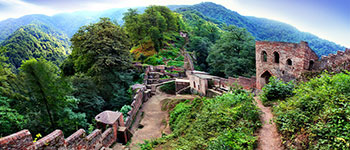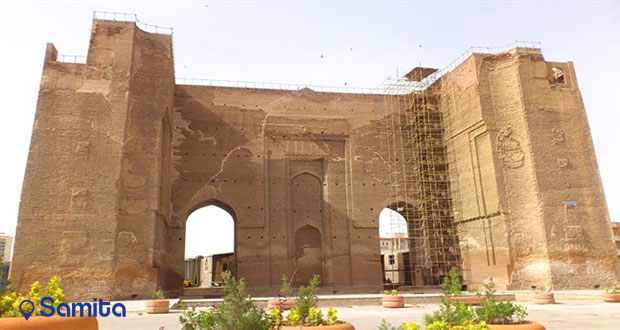Iran’s Fascinating Citadels and Castles

Iran, the land of the most beautiful tourist attractions and historical monuments on the Earth has abundant features to showcase the world, making sightseeing enthusiasts to have a glimpse on them before it gets too late. The country consists of many fascinating citadels and castles from all those years ago, making visitors stand in awe and visit them time and again. What you can find below makes you get to know with some of the well-known ones.
Karim Khan Citadel
Located in the heart of Shiraz in Fars province, Karim Khan Citadel manifests one of the most significant monuments of the Zand dynasty in the 18th century, named after the famous King Karim Khan which ruled over Iran and chose Shiraz as the capital. Considered as a part of Zandiyeh complex, the citadel has been constructed by the best architects and artists of the time and with the best materials from other cities and abroad. Functioning differently in various periods of history, the citadel has been used as living quarters, governor’s seat and a prison during the Zand, Qajar and Pahlavi periods respectively. Today, it is a museum operated by Iran's Cultural Heritage Organization.

Bam Citadel
Located in the southeastern province of Kerman, Iran, Bam Citadel is the largest adobe building in the world. Being in the midst of the vast, endless, gray deserts, it is one of the jewels of Iran’s tourism crown known as the Emerald of the Desert. Registered by UNESCO as a World Heritage Site, this enormous citadel, long famed for its large fortress on the Silk Road, can be traced back to the Achaemenid period (4th to 6th centuries BC) and even beyond. Sadly, in 2003, a disastrous earthquake struck Bam and the surrounding Kerman province, inflicting heavy damage; however, through a precise reconstruction, it retained its glamour and splendor again.

Tabriz Citadel
Built during Ilkhanid era, Tabriz Citadel, also known as Alishah Citadel is one of the historical monuments in the center of Tabriz, East Azarbaijan Province which is said that it was used as a military center during the Qajar era, even though other historians believe it was initially used as a mosque. Also, the 28-meter-high citadel was used as an educational center during Safavid era. Currently, it was turned into a new mosque for Friday prayers.

Rayen Citadel
Known as the second largest adobe structure in the world after Bam citadel, Rayen citadel in Kerman province is a medieval mud-brick structure displaying all the architectural elements of a deserted citadel. Dating back its foundation to the pre-Islamic Sassanid era, it used to be inhabited until 150 years ago. Despite several natural disasters, the monument is extremely well preserved and is recognized as one of the most interesting tourist attractions in Iran.

Roudkhan Castle
Located on the ridge of a mountain overlooking the nice Roulkhan village in an area of 2.6 hectares, Roudkhan castle is considered as one of the most amazing historical monuments known as a medieval brick and stone structure in 25 km southwest of Fuman in the northern province of Gilan. Dating back to the Seljuk Dynasty, the architects have used the surrounding mountainous features to construct the fort. In the nearby heights, the Roudkhan River flows from south to north. Having crossed a mountainous twisting path with dense forests, visitors are welcomed by the big entrance gate of the castle.

Falak-ol-Aflak Castle
Situated on top of a large hill in Khorramabad, the capital city of Lorestan province, the huge structure of Falak ol-Aflak castle appears, making visitors enthralled. Build during the Sassanid era (226-651), the castle is flanked by the Khorramabad river running on its eastern and southwestern sides which is a kind of natural protection for this fortress. Also, the residential districts of Khorramabad are visible on the western and northern sides. The castle has also been known as Shapur-Khast or Sabr-Khast Fortress, Dezbaz and Khorramabad Castle.

Alamut Castle
In Deylam near Roudbar, around 100 kilometers away from the capital Tehran, there is a mountainous castle called Alamut, literally means “Eagle’s Nest.” Unfortunately, the fortress suffered serious destruction by the Mongol invasion in the 13th century. Today, due to its historical significance, the remnants of the castle are being developed as a tourist attraction.

